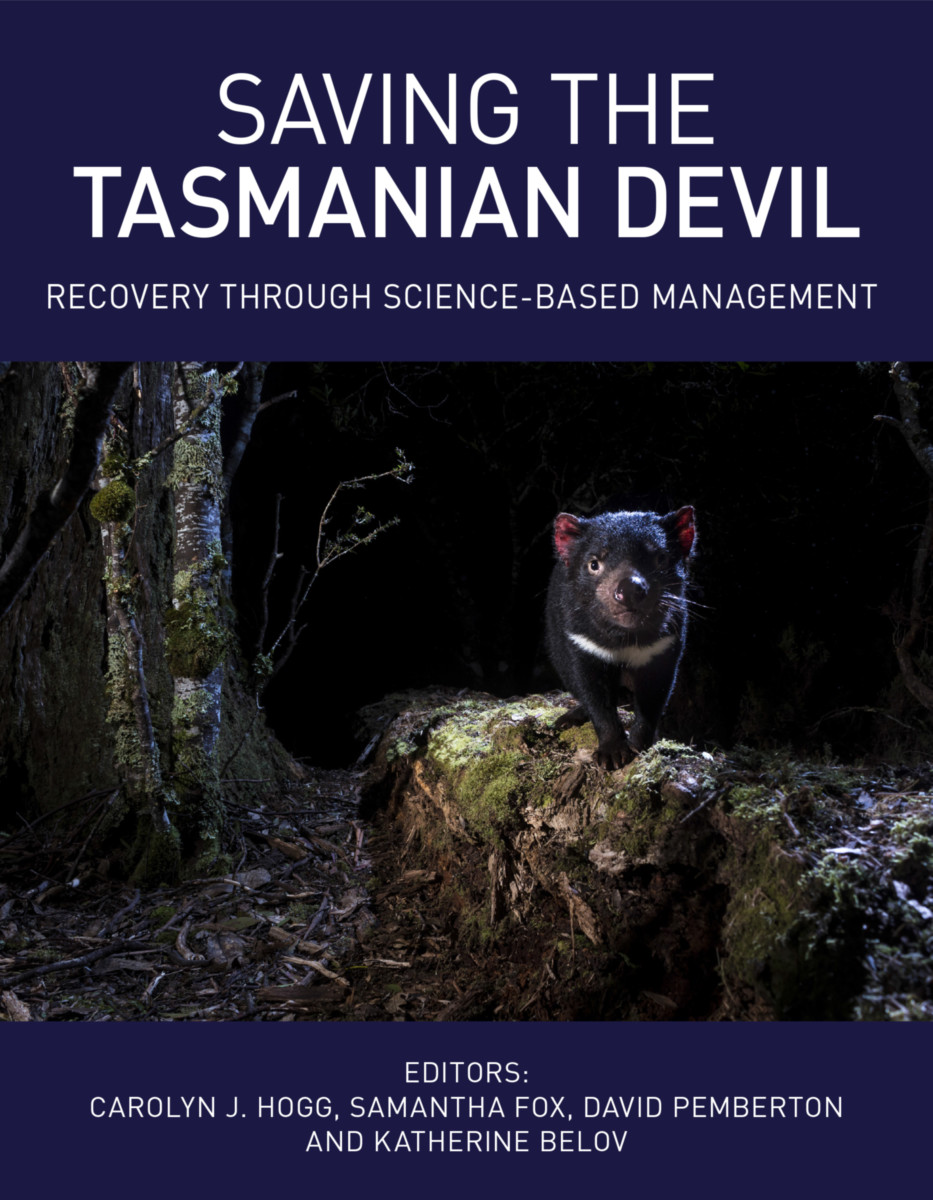EXCELLENCE IN SCIENCE PUBLISHING
Saving the Tasmanian Devil
Recovery through Science-based Management
- Publisher
CSIRO Publishing - Published
9th October 2019 - ISBN 9781486307180
- Language English
- Pages 348 pp.
- Size 8.5" x 10.5"
- Images 38 color plates, 32 b/w illus, 10 b/w photos
The Tasmanian devil is threatened by Devil Facial Tumour Disease (DFTD), a transmissible form of cancer that has reduced the population by over 80%. Hunting, extreme climate events, vehicle collision and habitat destruction also put pressure on this endangered species. The recovery effort to save the Tasmanian devil commenced over 15 years ago as a collaborative initiative between the Tasmanian government, the Australian government, the Zoo and Aquarium Association Australasia, and many research institutions.
Saving the Tasmanian Devil documents the journey taken by partner organizations in discovering what DFTD is, the effect it has on wild devil populations, and the outcomes achieved through research and management actions.
Chapters describe all aspects of devil conservation, including the captive devil populations, applied pathology, immunology and genetic research findings, adaptive management, and the importance of advocacy and partnerships.
This book will provide management practitioners and conservation scientists with insight into the complexities of undertaking a program of this scale, and will also be of value to researchers, students and others interested in conservation.
FEATURES
• Provides understanding of threatened species management practices for the Tasmanian devil such as captive breeding, fenced peninsulas and island populations
• Describes next generation disease, vaccine and genomic technology for conservation of the species
• Explains governance and partnerships involved in this adaptive management
Foreword
About the editors
Contributing authors
1 Carnivore conservation: the importance of carnivores to the ecosystem, and the value of reintroductions–Chris R. Dickman, Aaron C. Greenville and Thomas M. Newsome
2 The Tasmanian devil: a uniquely threatened animal–David Pemberton
3 Pathology and diagnostics of DFTD and other devil diseases–Judy Clarke, Sarah Peck, Colette Harmsen and Graeme Knowles
4 Revealing the origin and evolutionary trajectory of DFTD using genetics and genomics–Belinda Wright, Beata Ujvari, Janine Deakin, Elizabeth P. Murchison and Katherine Belov
5 Tasmanian devil immune genes and their function–Yuanyuan Cheng and Katrina Morris
6 Genetic tools: maintaining genetic diversity in the Tasmanian devil metapopulation–Catherine E. Grueber and Elspeth A. McLennan
7 Microbiomes, pouches and milk: natural solutions?–Emma Peel and Rowena Chong
8 Immune strategies to combat DFTD–A. Bruce Lyons and Gregory M. Woods
9 Devils and disease in the landscape: the impact of disease on devils in the wild and on the Tasmanian ecosystem–Menna E. Jones, Rodrigo K. Hamede, Tracey Hollings and Hamish I. McCallum
10 Conservation status drives management: what is happening in wild populations and why? –Billie T. Lazenby, Nicholas J. Mooney, Clare E. Hawkins, Greg J. Hocking and Samantha Fox
Colour plates
Carolyn Hogg
Carolyn J. Hogg is the Research Manager of the Australasian Wildlife Genomics Group at the University of Sydney. She has been working on the conservation of threatened species for over 20 years both in Australia and overseas.
Samantha Fox
Samantha Fox is a wildlife biologist with a focus on the conservation of threatened species. She is passionate about incorporating results from applied research into management decisions and has a strong collaborative emphasis in her work.
David Pemberton
David Pemberton is a wildlife biologist and is currently the Manager of the Save the Tasmanian Devil Program. He has published over 50 scientific papers and three books including co-authoring the book The Tasmanian Devil: A Unique and Threatened Animal.
Katherine Belov
Katherine Belov is the Professor for Comparative Genomics at the University of Sydney. She is a world leader in the genetics of immunity of Australian mammals and has developed new paradigms for the management of Australian wildlife populations threatened by disease. She has published over 150 papers on immunity and conservation.
Wildlife
Animals
Natural History


